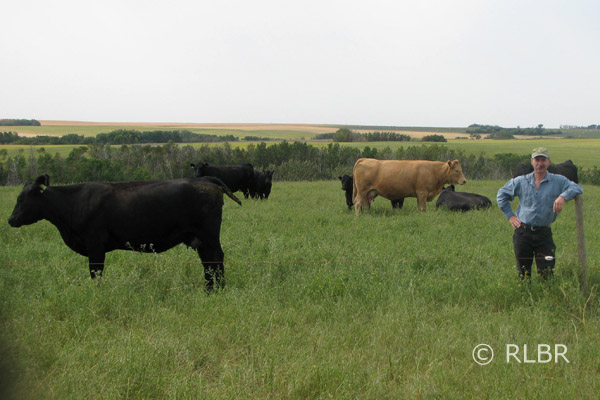
Photo by Shane Rounce on Unsplash
“Local solutions to local challenges”
Part of our mandate to build capacity in our communities is to develop, implement and sustain solutions to problems present in our region and environment. This is accomplished through collaboration and collective mobilization of resources (ecological, economic/built, human and social capitals) and working towards a specific goal.
Currently, the RLBR is in the process of implementing a membership, fee-for-service model to not only support the needs of our communities but to become a hub for connections, resources, consulting and knowledge sharing.
Interested in joining?

Finding innovative solutions for Waste Management is no easy task. So, in 2015 five municipalities met together to examine the potential to invest in a regional waste management site. The meeting was initiated to help address the challenges of waste management and recycling within rural and small urban municipalities of the RLBR.
16-43 Waste Management site officially opened in the fall of the same year. Today, it successfully operates on 200 acres of land (formerly an intensive livestock operation) and is centrally located in the RM of Douglas.

The facility has also become widely successful in finding creative solutions for AG (Agriculture) plastics to help recover them from our landfills. This is important to note, as many prairie farms residing in the RLBR use a high number of grain bags (also known as silage tarp) each year to protect feed or as a plastic mulch. We have discovered that these plastics can be converted into sustainable packaging materials.
Want to learn more? Check out our website or visit us!
Photos: Aztec Towing Ltd., Mumms Sprouting Seeds, Northwood Farm
As part of the RLBR mandate we are committed to supporting local initiatives relating to conservation, sustainable economic development and capacity building. Our culturally diverse landscape and communities allow for numerous local businesses and initiatives (i.e. events, fundraisers etc.) to be created, which is exciting for our rural environment.
Additionally, at the heart of our local region is agriculture. A trend we are seeing in recent years within our local economy is that there is a strong potential to develop sustainably-produced agricultural, livestock and silviculture products, along with implementing sustainable land based practices. Our hope is that this will increase the need for more small family farms and help produce a regional supply of natural food sources. This will create a resilient environment and strong economy.
Have an idea? Contact us!
Redberry Lake Community Farmers’ Market

In 2012, the RLBR created a community farmers’ market for residents within the biosphere region to sell their locally grown and handmade goods. In 2013 the market evolved to “Redberry Regional Farmers Market”, an approved market under the Saskatchewan Farmers’ Market Co-operative (SFMC). The RLBR would love to see this initiative be re-born through an interested community group or individual. If you are interested let us know!
Regional Mapping and Planning
Land and Infrastructure Resiliency Assessment, preparing for climate extremes (LIRA)

LIRA, developed by The Science and Technology Branch of Agriculture Canada was a program implemented in rural, agricultural regions for finding solutions to economic and environmental consequences due to climate change events. These events, such as extreme rainfall, could potentially increase the size and frequency of flooding- causing damage to agricultural landscapes and rural infrastructure. From 2011-2013 the RLBR became a pilot site due to the region’s landscape being heavily cultivated. The local communities were asked the following questions:
- Is it possible to be proactive and ‘adapt’ a local landscape to mitigate flood-related damage while at the same time increasing a region’s economic development opportunities?
- Would the benefits outweigh the costs of implementation?
LIRA developed a standardized cost/benefit assessment tool applicable in multiple regions of the country for decision makers to answer these types of questions. This was to be used by municipalities for developing proactive plans and strategies to cost-effectively mitigate the effects of the extreme events. As a pilot site, the RLBR was able to work on addressing some of these issues through: The Summary Report, Community Mapping Report and the Land Use and Infrastructure Data Collection and Cataloguing (LUIDC) Project.

Agri-environmental Group Plan (AEGP)- Funding for Sustainable Farming

The Agri-Environmental Group Plan (AEGP) was launched in 2006 as an initiative under Growing Forward 1 (2008- March 2013) and Growing Forward 2 (April 2013). Through this program the Redberry Lake Watershed AEGP successfully reached 306 producers, involving them in a total of 653 Beneficial Management Practice projects within the Rural Municipalities of Blaine Lake, Douglas, Great Bend, Leask, Mayfield, Meeting Lake and Redberry. Though the program officially ended in March 2013, of the 4.56 million applied for, the AEGP was able to potentially bring over 2.28 million back to producers living in the RLBR area of cooperation.
Growing Forward 2- This was a federal-provincial-territorial policy framework of agricultural programs. In Saskatchewan the AEGP initiative addressed and encouraged producers to implement Beneficial Management Practices. This would help reduce negative impacts on soil, water, air and biodiversity. Under the GF 2, the AEGP program was handed over to the watershed groups in the province.
Current Farm Support & Programs: For producers in the former Redberry Lake AEGP area, the North Saskatchewan River Basin Council (NSRBC) is available to help with technical assistance. Please visit the NSRBC website for more information and the technician in your area.
Check out www.agriculture.gov.sk.ca for current funding opportunities available such as the Farm and Ranch Water Infrastructure Program (FRWIP) and Farm Stewardship Program.




